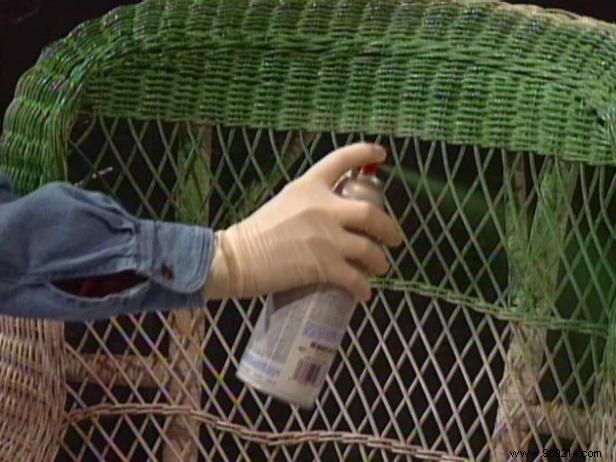Start by vacuuming the dust and cleaning up any loose dirt and cobwebs. To get into crevices and small cracks, cut the bristles off an old paintbrush, leaving about 1" of bristles remaining. The bristles will still be soft, but they will be stiff enough to help dust off furniture. An air compressor also works good for blowing dust..
Use a wire brush with a scraper to remove old paint and rust from the solid parts of wicker furniture.
After cleaning loose dirt, wash furniture with a sponge and liquid detergent. Keep the sponge damp rather than wet, and use as much foam as possible. For moldy areas, add 1 cup of bleach to the water. Wear latex gloves to protect your hands from splinters while washing furniture. When you're done, rinse the furniture with a spray bottle filled with clean water. Avoid soaking the wicker - if you do, you'll have to wait quite a while for it to dry before you can repair it.
When the furniture is dry, check the areas that need repair. Most loose rattan can be repaired with hot glue or carpenter's glue.


Now that the furniture is prepared, start painting with spray paint or an electric sprayer. It is preferable to paint indoors, where dust or insects will not mar the finish. But paint outdoors if ventilation is not adequate inside. Use a good enamel paint suitable for wicker furniture (most paint labels list the surfaces the product is suitable for). Hold spray can 8" to 10" away from furniture, and spray back and forth for more even coverage.
If you're spray painting indoors, wear a respirator-type mask - the fumes can be quite strong.
After painting, do not allow anyone to sit in the chair for 48 hours. This will give the paint time to cure and prevent stretching.